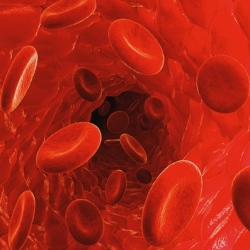
Scientists have created the first synthetic version of a cardiac stem cell, offering therapeutic benefits comparable to those from natural stem cells, but without the risks and limitations, according to researchers from North Carolina State University, and Zhengzhou University in China.
The newly created synthetic stem cells cannot replicate. That means they could reduce some of the risks associated with natural stem-cell therapies, including tumor growth and immune rejection. The synthetic stem calls would also avoid the fragility of natural stem cells, which require careful storage and a multi-step process of typing and characterization before they can be used.
In an in vitro (test tube) experiment described in an open-access paper in Nature Communications, the scientists created synthetic “cell-mimicking microparticles” (CMMPs) and tested them on a mouse model with myocardial infarction.
The scientists found that the CMMPs’ ability to bind to cardiac tissue and promote growth after a heart attack was comparable to that of cardiac stem cells. But unlike cardiac (and other) natural stem cells, the synthetic stem cells have better preservation stability, and the technology is also generalizable to other types of stem cells, according to the researchers.
“The synthetic cells operate much the same way a deactivated vaccine works,” explains research-team leader Ke Cheng, associate professor of molecular biomedical sciences at NC State, associate professor in the joint biomedical engineering program at NC State and UNC, and adjunct associate professor at the UNC Eshelman School of Pharmacy.
“[The synthetic cells’] membranes allow them to bypass the immune response, bind to cardiac tissue, release the growth factors, and generate repair, but they cannot amplify [and thus risk out-of-control growth, leading to tumors] by themselves. So you get the benefits of stem cell therapy without risks.”
The synthetic stem cells are also much more durable than human stem cells, they can tolerate harsh freezing and thawing, and they don’t have to be derived from the patient’s own cells, the researchers note.
“Although our first application targeted the heart, the CMMP strategy represents a platform technology that can be applied to multiple stem cell types and the repair of various organ systems,” the authors state in the paper.
